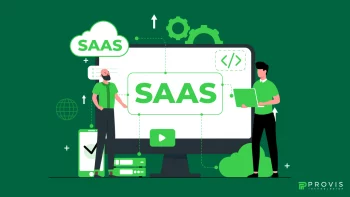Product launch strategy is a demanding adventure for organizations. That’s why defining your product clearly will help you connect better with your desired consumers. Also, it will verify that your product marketing and sales methods match their exact requirements.
A product launch strategy without a clear definition faces the risk of getting swallowed by competitive noise, which reduces the chance of achieving your desired results. This blog from Provis Technologies shows you how to establish clear product definitions to achieve product launch success.
What Is The Meaning Of Defining a Product?
To achieve effective product definition, companies must establish thorough details about their products, functions, and market segments.
Your product needs clear definitions of its essential capabilities and value proposition, along with clear identification of target customers and USPs. The definition of a product enables organizations to build their branding structure and early sales approaches. This helps them deliver core benefits to future customer groups.
A solid product launch strategy outlines how your solution addresses market challenges while targeting specific audience segments. Also, it includes its functional advantages and pricing.
These defined product elements create a shared understanding among developers, marketing teams and sales representatives, which results in a high-impact product launch.
The Reality of Product Launches
The market receives more than 30,000 new products yearly, but nearly 95% of them eventually fail.
The high failure rate underscores the critical need for defined products before market entry. Companies dedicate major financial resources to product development, but most products lose market momentum because they lack proper strategic planning.
During 2023, over 5.5 million new businesses emerged through millions of dollars in investments toward the product development process. Among the numerous new businesses that started in 2023, only a small number succeeded in establishing long-term operations.
Most failures in business stem from insufficient market analysis and problems with product positioning. Therefore, great product ideas alone fail to create sufficient success.
How Can You Define Your Product To Ensure A Successful Launch?
Let’s go through the in-depth guide about how you can define your product launch plan for success.
Identify the Problem-Solving Abilities Of Your Product
Each product succeeding in the market requires a basis for problem resolution. Your product launch strategy depends heavily on understanding the challenges that your target audience faces. Begin your strategy by reviewing what your target customers require and dislike.
Does your product resolve these user problems more effectively than what already exists in the market?
However, market research supported by competitor analysis and survey results will transform this aspect of your product description.
Defining the Target Audience Of Your Product
Your product launch strategy needs to serve only particular customers. Your ideal customer identification process allows your marketing and product design to be more efficient.
Moreover, you should examine variables that describe your audience by analyzing physical and psychological attributes, including age and gender.
Understanding your audience becomes more effective when you include psychographic traits such as lifestyle, values, and interests. At the same time, you must examine user behaviours and personal choices to build something that truly connects with your audience.
Highlight Your Unique Selling Proposition (USP)
The unique differentiation your product launch strategy offers against similar market offerings forms the core of your USP.
In order to highlight your product’s unique selling point, you must question:
- What makes your product stand apart from competitors?
- Will your product bring a revolution?
- Does it lead through reduced costs or innovative design?
Your USP should be clearly stated so your product stands out effectively against competitors in market fields.
Mention The Features And Benefits
The design features of your product must deliver meaningful value to users.
Basic feature lists do not suffice in establishing market value. You must demonstrate to your customers how key features generate practical advantages for them.
Moreover, defining benefits for customers enhances your product’s appeal and helps drive higher conversion.
Strategically positioning your product is essential
How customers understand your product is established by market positioning. Question yourself about:
- Should your product cater to customers looking for affordable options or luxury premium choices?
- What type of perception do you want your product to have?
- Does your product target specific emotions of customers?
Once correctly positioned, your product launch strategy will attract its targeted audience while being consistent with your brand identity.
Develop a Pricing Strategy
Successful product launch strategy heavily depends on finding the appropriate price point. Your pricing decision matches market competition with customer beliefs and industry standings.
Further, your pricing will follow either industry standards through competitive pricing or adapt to customer evaluations through value-based pricing.
With penetration prices, businesses draw first customers, yet premium prices elevate a product to exclusive high-end status. The selection of a pricing strategy greatly affects your product’s achievement rates, financial health, and long-term market durability.
What is Product Launch vs Feature Launch?
- Product Launch
Product launch introduces fresh products to existing markets. The launch of any new product needs extensive planning, beginning with market studies and competitive analysis. At the same time, it includes pre-launch marketing and customer onboarding strategies.
- Feature Launch
Instead of launching an entirely new product company, a feature launch is used to add new features or enhancements to their existing products.
Feature launches specifically target users who already interact with the product. This process requires specific announcements alongside beta testing, followed by customer feedback collection. Along with this, documentation and social media marketing strategies are essential parts of a feature launch.
Product launches work toward acquiring new clients. However, feature launches dedicate their efforts towards improved experiences.
The Different Types of Product Launches
A product launch follows different strategies according to present market dynamics and established business purposes.
- A soft launch directs new offerings toward limited viewers to collect user feedback before moving ahead with complete market entry.
- A hard launch refers to a complete product release through intensive marketing campaigns across a wide audience network.
- Beta launch releases a preliminary product version for product testing before the final market deployment.
- The introduction of an enhanced or repositioned version of an existing product constitutes a re-launch.
A successful launch requires you to select the best approach that allows your product to connect with its target market most effectively.
Importance of Clearly Defining Your Product Before Launching It
Organizations need a clear definition of their product to achieve business success.
- A product with a well-defined fit to market needs increases adoption because it directly meets customer requirements.
- The definition clarity of the product helps integration into the Go-to-Market (GTM) strategy by enabling precise audience-targeted promotional activities.
- Customers tend to invest in and trust products more when they understand the value they receive with improved customer experience.
- The systematic definition of a product helps maintain an understanding across developers, marketers and colleagues to create a smooth work process.
- A precisely defined product creates maximum revenue potential through accurate positioning and pricing strategies that lead to profitability and devoted customer loyalty.
The Bottom Line
A successful market entry requires products to have clear definitions established prior to their debut.
A successful launch depends upon your ability to determine solution problems, specify target customers, and communicate Unique Selling Propositions.
A customer-focused plan alongside a well-planned strategy can help manufacturers reach maximum impact and sustainable growth. Moreover, companies that properly define their products succeed significantly better than enterprises that move to market with hurried definitions.
Devote sufficient time to process your product definition because this crucial basis ensures a successful product launch.
Written By
Author's Picks
Categories
- AI for Startups
- AI in Web Development
- AI Integration
- AI Platforms
- AI Prompt
- AI Tools
- AI Trading Software
- Android App
- Android vs iOS Development
- Angular
- API
- API Development
- App
- app development
- App Idea
- App User Feedback
- Application
- Artificial Intelligence
- Audit Services
- Automotive Industry
- Awards and Recognition
- Business Consulting
- Business Website
- Chatbots
- CRM
- CRM for Financial Advisors
- Custom CRM
- Custom SaaS
- Custom Website
- Customer Service
- dashboard design
- Developing a Mobile App
- Digital Business
- E-commerce
- EMR Integration
- Finance
- Financial Advisors
- Financial Advisors
- GIT
- Health Insurance
- iOS App
- iOS App Development
- IoT Mobile App Development
- IoT Platforms
- IT Audit Services
- IT Consulting
- IT Strategies
- Java Development
- Laravel
- Lean Canvas
- Learning Management System
- Logistics Apps
- Mobile App Development
- MVP
- Native App
- News Aggregator Site
- OTT
- Outsourcing IT
- Payment Gateway
- predictive analysis
- Product Launch Strategy
- Progressive Web App (PWA)
- Prototype
- Recommender Systems
- Ruby
- SaaS
- SaaS Application
- SaaS Business
- SaaS Company
- SaaS Development
- SaaS Product
- SaaS Project
- Sales Funnel
- SEO
- Shopping Cart
- Software Development
- SSL and TLS
- Startup Checklist
- Technology
- Tetradic Color Scheme
- UI/UX Design Company
- Unit Testing
- User Flow
- User Testing
- Web Development
- Web Performance Optimization
- website Maintenance Services
- Website Migration Service
- Website Speed Optimization
- WooCommerce
- WordPress





